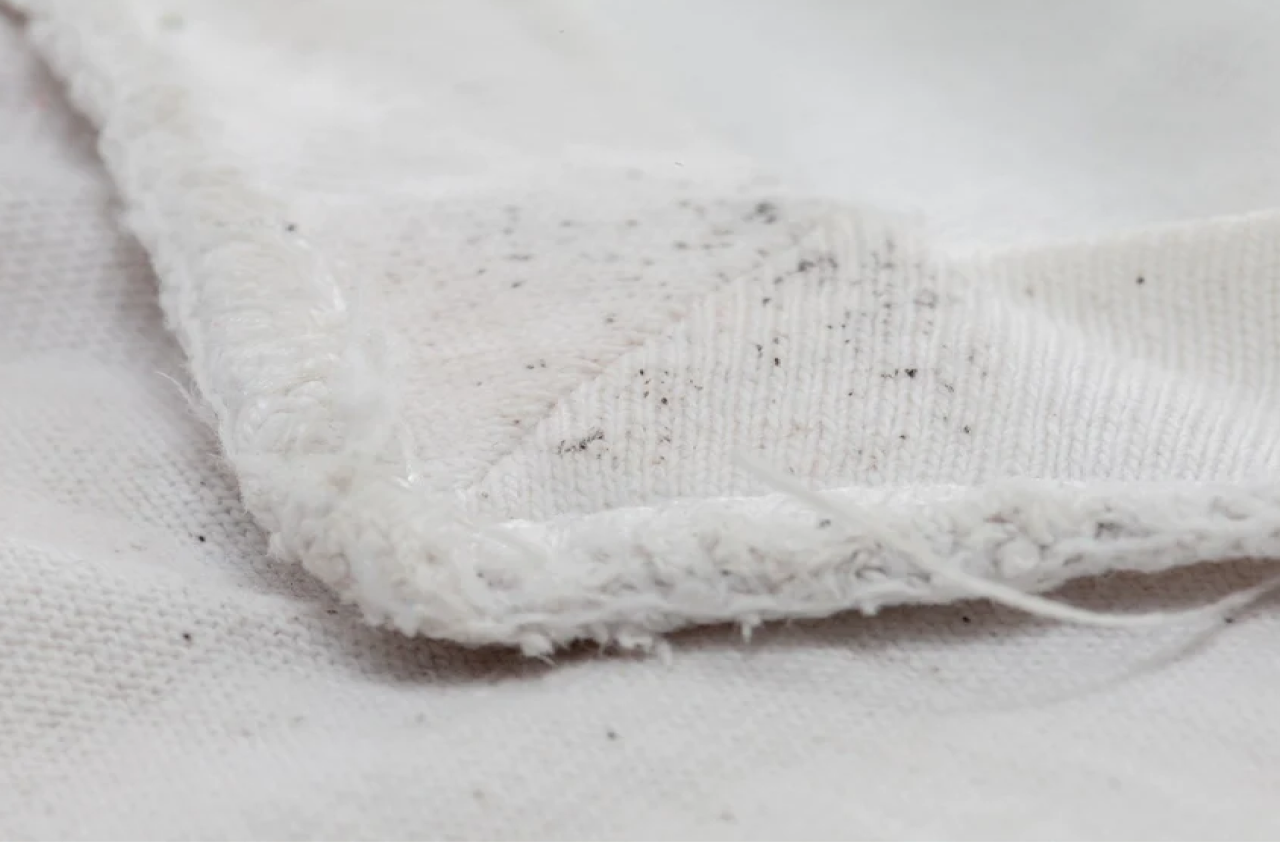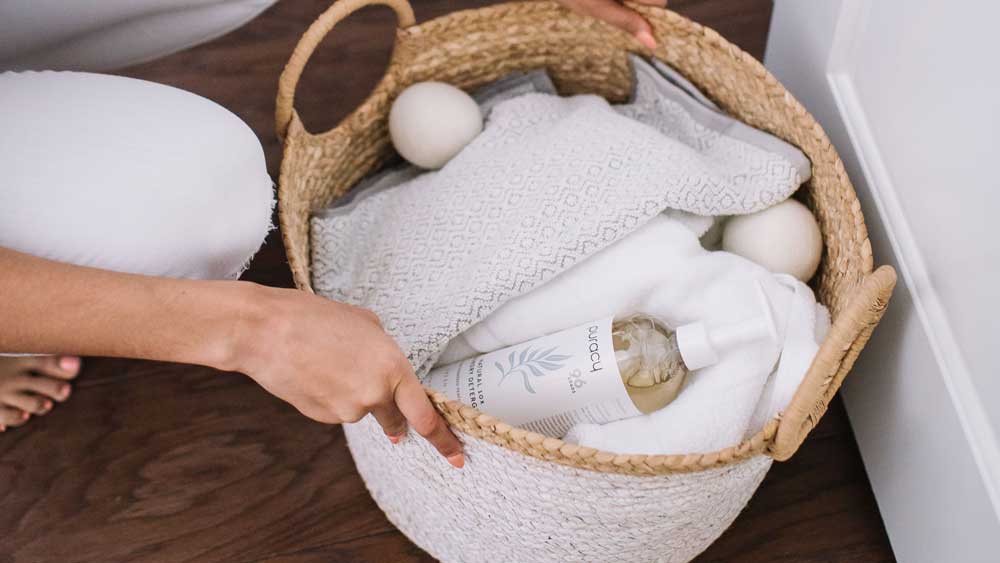Article: A Step-by-Step Guide to Removing Mold Stains

A Step-by-Step Guide to Removing Mold Stains
Mold and mildew stains can be a serious problem, especially when left unattended for a long period of time. But where should you start when it comes to these tricky stains? We’ve here to help! To make sure your clothes and carpets are thoroughly clean of mold stains, here is a guide to identifying them, as well as making sure they are completely gone from your household fabrics.
How Do Mold Stains Form?

Mold and mildew stains are commonly found in homes and can spread quickly, and they usually develop on fabrics due to prolonged exposure to water. Worse, these blemishes gradually destroy anything they grow on, so they needs to be treated immediately. Typically, this fungus grows in damp, dark locations, so be sure to always put away wet clothing appropriately and quickly to avoid these stains from proliferating.
Mold stains should be treated promptly, as exposure can have serious health consequences, especially for those with chronic respiratory diseases. The fungus can often produce allergens and irritants that can trigger allergic reactions like sneezing, red eyes, rashes, and more. Be sure you are wearing appropriate protection and attire when cleaning and refer to the EPA’s guide on what to wear when cleaning mold.
What Do Mold Stains Look Like?

You can often smell a mold or mildew stain before you see it. Its musty, putrid odor is easily detectable. If you find yourself still noticing a strong, earthy odor after you clean, that could be a sign that the fungus is still there. Look for black, blue, or green spots on clothing or fabric, and if left untreated, these stains can get darker in color.
How to Get Rid of Mold Stains on Clothing

If you forget to put away washed clothes, they may develop mold or mildew stains – but don’t worry, when treated promptly and thoroughly, they can be cleaned with natural solutions.
Pre-Treat Clothes With a Stain Remover

Spray the affected area with our Natural Stain Remover, and take a soft brush to agitate the stains and set the cleaner. Let the solution soak the surface for at least 8 hours before rinsing the fabric.
Use a Natural Detergent and Hot Water

When you put your clothes in the washing machine, be sure to use the hottest water setting. Hot water is effective at killing spores, so try to ensure the water temperature is above 140 degrees Fahrenheit (60 degrees Celsius). Our Natural Laundry Detergent will tackle the musty smell, as well as neutralize any remaining odors without dulling the color of your clothes.
Dry Clothes Using Sunlight When Possible

Dry your clothes using the highest heat setting. Alternatively, drying clothes outside in direct sunlight can also effectively remove spores. Before you return clothes to your closet or wear them, be sure they are completely dry.
How To Remove Mold in Washing Machines

Once you’ve removed the stains from your clothes, you also want to be sure there is no mold in your washing machine – as this can stain future laundry loads. After all, the fungus flourishes thanks to water, so make sure any areas are never permanently damp and thoroughly dry when not in use.
To clean your washing machine, first, wipe the gasket using our Natural Disinfecting Surface Cleaner. Use a diluted bleach solution to thoroughly clean the rubber seal, which is often specked with mold and mildew. Let it soak for up to 12 hours, and then thoroughly wipe it off. Run the machine with a quarter cup of bleach, on the machine's hottest cycle. This will target any spores in the machine's tub as well.
Once cleaned, always make sure your washing machine is thoroughly dry and not moist or damp when it is not in use. This will ensure that the fungus does not grow inside the machine. Be sure to always promptly remove wet clothes from the machine, as the longer they stay, the greater chance bacteria has to grow.
How To Get Rid of Mold Stains on Carpet and Upholstery

A moldy carpet or rug can be a tricky problem, but when treated quickly, you can save the item from spores. If you find stains on your carpet or upholstery, here are tips for targeting these spots before they proliferate.
Ventilate the Room

Be sure the room you are in is well ventilated, with windows and doors wide open. This will ensure the musty odor and moisture can escape.
Treat the Area With a Stain Remover

For individual stains, spray the affected area with Natural Stain Remover, agitating the stain with a soft brush. Let the solution soak for at least 8 hours or overnight.
Use a Carpet Shampoo Steam Cleaner

Fill a steam cleaner's tank with our Natural Carpet Cleaner and target the affected areas. Follow this up by filling the tank with clean water. Allow the carpet to dry completely, and then go over the carpet with a HEPA vacuum to target any remaining spores.
Call a Professional for Deep-Set Stains

For serious problems, especially Black Mold, call a professional, as large scale infestations can damage floors and baseboards. If you don’t have a HEPA vacuum, professional cleaners may also have the correct equipment, such as a steam cleaner, to efficiently deal with the mold. In some cases, you may have to remove the infested carpet completely, according to the EPA.
How To Remove Mold Stains on Surfaces

If you find mold or mildew on a surface, clean off surface dirt with our Natural Multi-Surface Cleaner. Then, use a diluted bleach solution to fully eliminate spores. Make sure the affected area is well ventilated and be sure to use a mask and gloves when cleaning for your own safety. Check out our Tips for Cleaning for Allergies for a full guide to disinfecting your home for other dangerous stains and bacteria.
What Should You Avoid Using on Mold Stains?

Chlorine bleach should be avoided for at-home mold stains, and the EPA recommends not using this biocide as a routine cleaning solution for mold. Also, never mix chlorine bleach with any detergents or cleaning solutions that contain ammonia. Doing so can produce toxic fumes and trigger those with respiratory problems. When using bleach to clean, you should always use caution – read our guide for the best practices and precautions to take.
One way to avoid the fungus from continuing to grow in areas that are often damp or full of moisture is to ensure it is always properly ventilated. Whether you run a fan or keep windows open, mold can be kept to a minimum when combined with regular disinfecting. Check out our guide to deep cleaning bathrooms to ensure this room – a frequent target for bacteria – regularly gets effectively cleaned.
Treat Fabric Mold Stains Naturally with Puracy

With Puracy, you won’t be using harsh chemicals or toxins to take on fabric mold stains. Instead, with our Natural Stain Remover and Laundry Detergent, you'll be using only pure ingredients, which means no sulfates, phosphates, salicylates, parabens, perfumes, or dyes.
Next time you need to take on a daunting cleaning task, count on Puracy to offer plant based solutions that are effective on the toughest stains while still being gentle on the most sensitive skin.

























